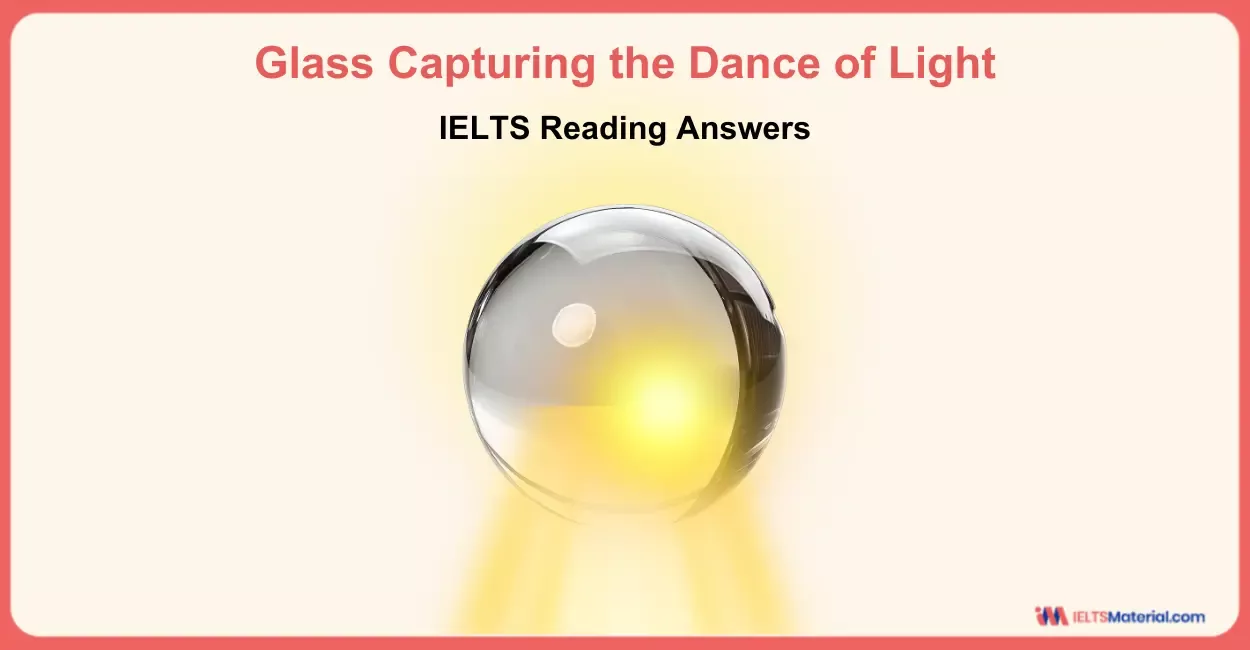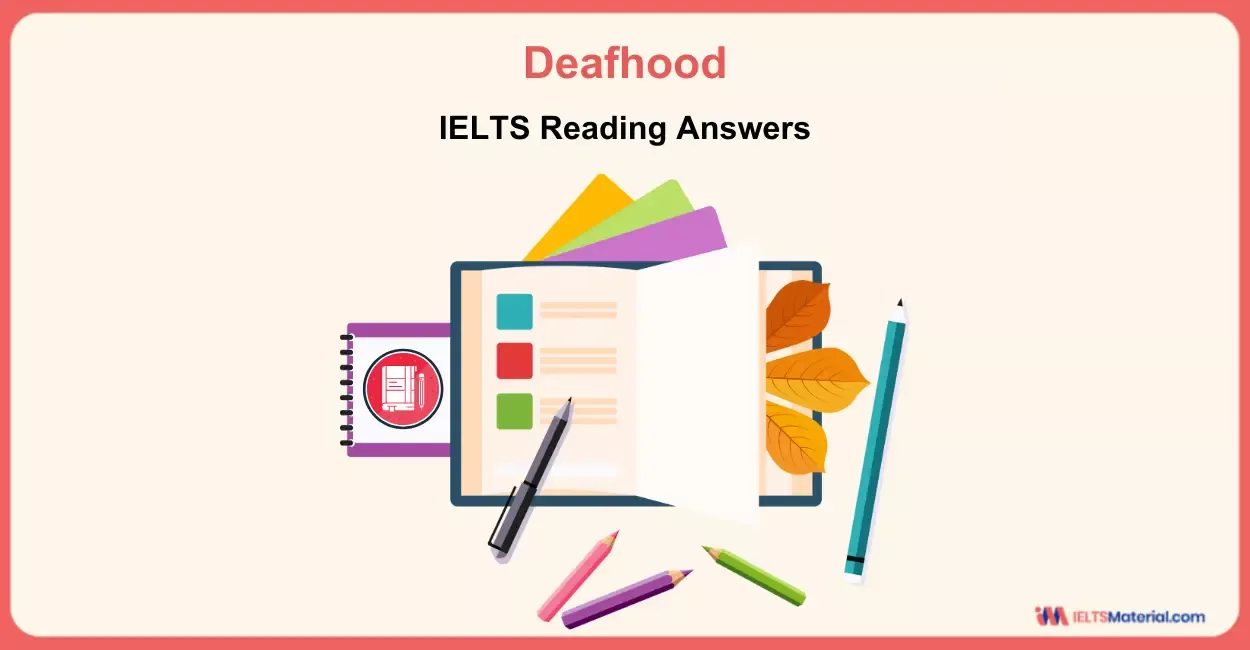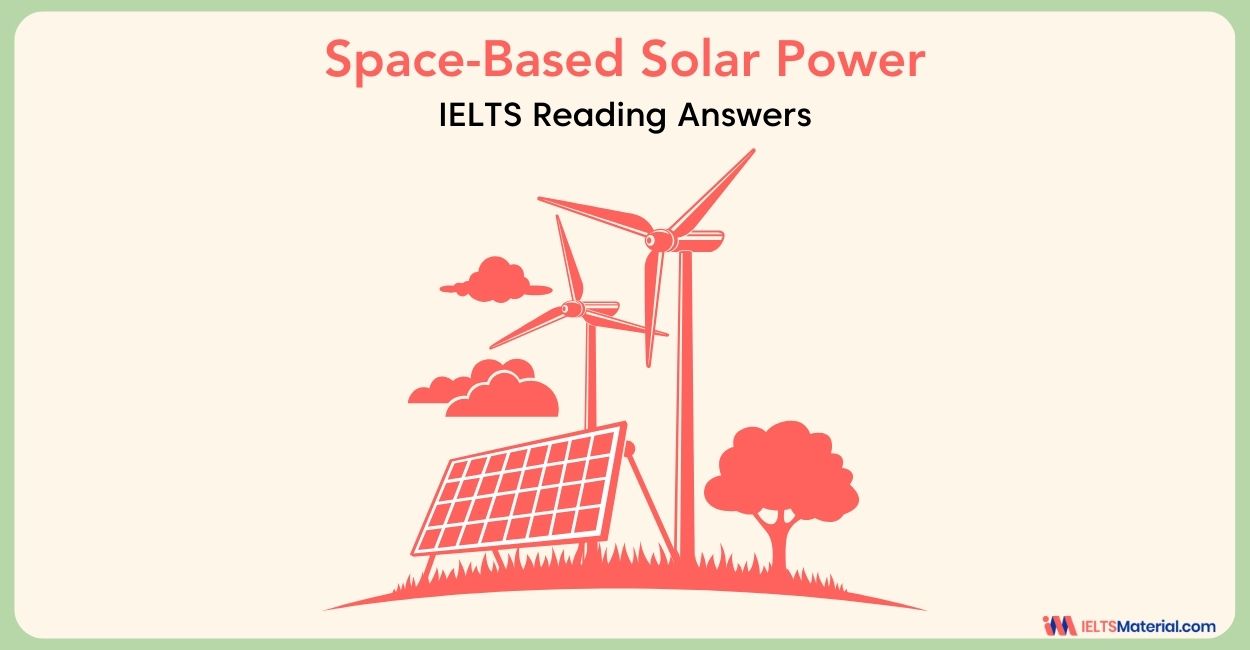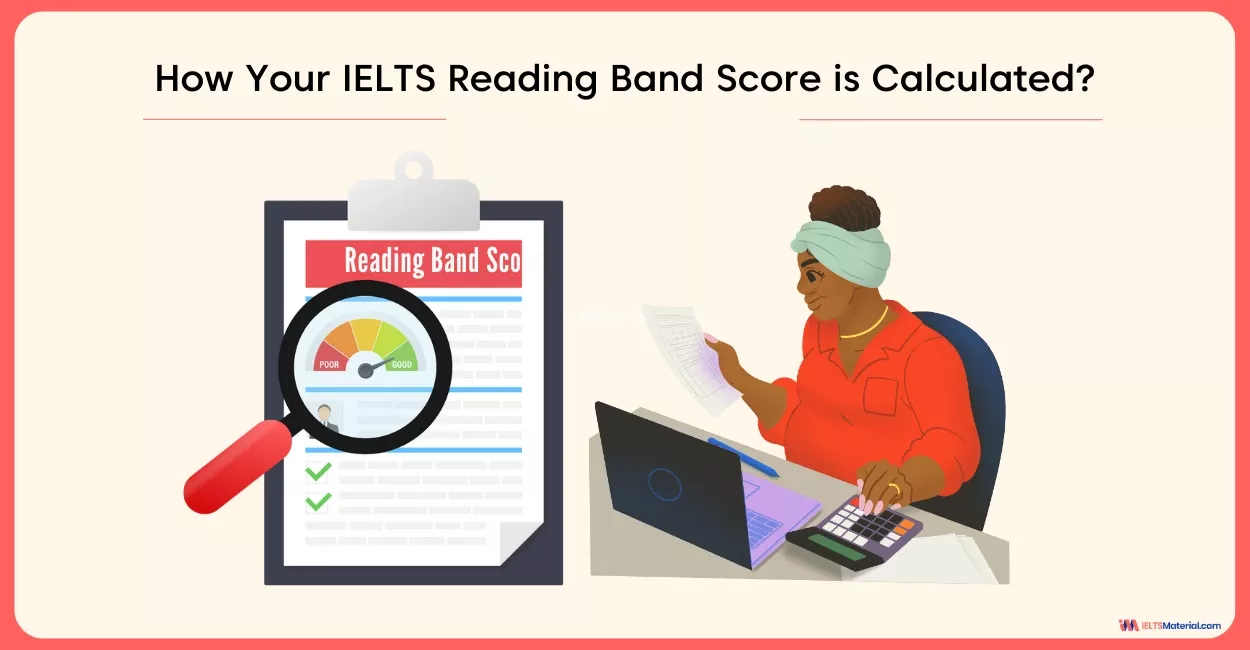Learning About The Past - IELTS Reading Answers
Evaluate your reading skills with Learning About The Past IELTS Reading Answers for a band 9. Also, learn how to approach various IELTS reading questions & improve your reading strategy by looking at the answer explanations for this particular passage.
Table of Contents

Limited-Time Offer : Access a FREE 10-Day IELTS Study Plan!
Knowing how to complete IELTS Reading in less than an hour is an absolute must for securing a Band 9 in this module. The best way to master this art is to start by practicing single passages, like Learning About The Past IELTS Reading Answers.
So, in this blog, we will solve Learning About The Past IELTS Reading Answers, provide explanations, locations for the answers, and tips to help you handle three different types of reading question types given with this passage.
Passage for Learning About The Past IELTS Reading Answers
The key to answering the questions from this passage lies in reading the Learning About The Past passage below. This will improve your focus, accuracy, and reading habits, all vital for a high IELTS band score in the reading module.
You should spend about 20 minutes on questions 1-14, which are based on the Reading Passage below.
Learning About The Past
A Many past societies collapsed or vanished, leaving behind monumental ruins such as those that the poet Shelley imagined in his sonnet, Ozymandias. By collapse, I mean a drastic decrease in human population size and/or political/economic/social complexity, over a considerable area, for an extended time. By those standards, most people would consider the following past societies to have been famous victims of full-fledged collapses rather than of just minor declines: the Anasazi and Cahokia within the boundaries of the modern US, the Maya cities in Central America, Moche and Tiwanaku societies in South America, Norse Greenland, Mycenean Greece and Minoan Crete in Europe, Great Zimbabwe in Africa, Angkor Wat and the Harappan Indus Valley cities in Asia, and Easter Island in the Pacific Ocean.
B The monumental ruins left behind by those past societies hold a fascination for all of us. We marvel at them when as children we first learn of them through pictures. When we grow up, many of us plan vacations in order to experience them first hand. We feel drawn to their often spectacular and haunting beauty, and also to the mysteries that they pose. The scales of the ruins testify to the former wealth and power of their builders. Yet these builders vanished, abandoning the great structures that they had created at such effort. How could a society that was once so mighty end up collapsing?
C It has long been suspected that many of those mysterious abandonments were at least partly triggered by ecological problems: people inadvertently destroying the environmental resources on which their societies depended. This suspicion of unintended ecological suicide (ecocide) has been confirmed by discoveries made in recent decades by archaeologists, climatologists, historians, palaeontologists, and palynologists (pollen scientists). The processes through which past societies have undermined themselves by damaging their environments fall into eight categories, whose relative importance differs from case to case: deforestation and habitat destruction, soil problems, water management problems, overhunting, overfishing, effects of introduced species on native species, human population growth, and increased impact of people.
D Those past collapses tended to follow somewhat similar courses constituting variations on a theme. Writers find it tempting to draw analogies between the course of human societies and the course of individual human lives – to talk of a society’s birth, growth, peak, old age and eventual death. But that metaphor proves erroneous for many past societies: they declined rapidly after reaching peak numbers and power, and those rapid declines must have come as a surprise and shock to their citizens. Obviously, too, this trajectory is not one that all past societies followed unvaryingly to completion: different societies collapsed to different degrees and in somewhat different ways, while many societies did not collapse at all.
E Today many people feel that environmental problems overshadow all the other threats to global civilisation. These environmental problems include the same eight that undermined past societies, plus four new ones: human-caused climate change, build up of toxic chemicals in the environment, energy shortages, and full human utilisation of the Earth’s photosynthetic capacity. But the seriousness of these current environmental problems is vigorously debated. Are the risks greatly exaggerated, or conversely are they underestimated? Will modern technology solve our problems, or is it creating new problems faster than it solves old ones? When we deplete one resource (e.g. wood, oil, or ocean fish), can we count on being able to substitute some new resource (e.g. plastics, wind and solar energy, or farmed fish)? Isn’t the rate of human population growth declining, such that we’re already on course for the world’s population to level off at some manageable number of people?
F Questions like this illustrate why those famous collapses of past civilisations have taken on more meaning than just that of a romantic mystery. Perhaps there are some practical lessons that we could learn from all those past collapses. But there are also differences between the modern world and its problems, and those past societies and their problems. We shouldn’t be so naive as to think that study of the past will yield simple solutions, directly transferable to our societies today. We differ from past societies in some respects that put us at lower risk than them; some of those respects often mentioned include our powerful technology (i.e. its beneficial effects), globalisation, modern medicine, and greater knowledge of past societies and of distant modern societies. We also differ from past societies in some respects that put us at greater risk than them: again, our potent technology (i.e., its unintended destructive effects), globalisation (such that now a problem in one part of the world affects all the rest), the dependence of millions of us on modern medicine for our survival, and our much larger human population. Perhaps we can still learn from the past, but only if we think carefully about its lessons.
Questions for Learning About The Past Reading Answers
The Academic passage, Learning About The Past Reading Answers, consists of 13 questions, which present three different IELTS Reading question types. So, solving this passage will help you get acquainted with different IELTS Reading question types with examples.
- IELTS Reading Multiple Choice Questions (Q. 1-3 & 14)
- IELTS Reading Yes/No/Not Given (Q. 4-8)
- IELTS Reading Matching Endings (Q. 9-13)
Now, set your time, and let’s get started with the questions!
Questions 1-3
1 When the writer describes the impact of monumental ruins today, he emphasises:
A The income they generate from tourism.
B The area of land they occupy.
C Their archaeological value.
D Their romantic appeal.
2 Recent findings concerning vanished civilisations have
A Overturned long-held beliefs.
B Caused controversy amongst scientists
C Come from a variety of disciplines.
D Identified one main cause of environmental damage.
3 What does the writer say about ways in which former societies collapsed?
A The pace of decline was usually similar.
B The likelihood of collapse would have been foreseeable
C Deterioration invariably led to total collapse.
D Individual citizens could sometimes influence the course of events.
Questions 4-8
Do the following statements agree with the views of the writer in the Reading Passage?
Write
YES if the statement agrees with the claims of the writer
NO if the statement contradicts the claims of the writer
NOT GIVEN if it is impossible to say what the writer thinks about this
4 It is widely believed that environmental problems represent the main danger faced by the modern world.
5 The accumulation of poisonous substances is a relatively modern problem.
6 There is general agreement that the threats posed by environmental problems are very serious.
7 Some past societies resembled present-day societies more closely than others.
8 We should be careful when drawing comparisons between past and present.
Questions 9-13
Complete each sentence with the correct ending, A-F, below.
Write the correct letter, A-F.
9 Evidence of the greatness of some former civilisations
10 The parallel between an individual’s life and the life of a society
11 The number of environmental problems that societies face
12 The power of technology
13 A consideration of historical events and trends
A is not necessarily valid.
B provides grounds for an optimistic outlook.
C exists in the form of physical structures.
D is potentially both positive and negative.
E will not provide direct solutions for present problems.
F is greater now than in the past.
Questions 14
14 What is the main argument of the Reading Passage?
A There are differences as well as similarities between past and present societies.
B More should be done to preserve the physical remains of earlier civilisations.
C Some historical accounts of great civilisations are inaccurate.
D Modern societies are dependent on each other for their continuing survival.
Learn quick solving tips and reading techniques from experts!
Connect with us through our FREE IELTS online classes!
Answers and Explanations of Learning About The Past IELTS Reading Passage
Don’t miss the answer key for the Learning About The Past IELTS Reading passage, complete with detailed explanations, and prepare to score a high IELTS Academic Reading score.
1 Answer: C
Question type: Multiple choice questions
Answer location: Paragraph B, lines 1-5
Answer explanation: In the given lines, the monumental ruins left behind by those past societies hold a fascination for all of us. …We feel drawn to their often spectacular and haunting beauty, and also to the mysteries that they pose. The scales of the ruins testify to the former wealth and power of their builders, the writer talks about the beauty and the fascination archaeological ruins hold for us as children and as adults and how the ruins can provide us an picture of how people lived in the past. This points to the archaeological value of such places. Hence, the answer is C.
2 Answer: D
Question type: Multiple choice questions
Answer location: Paragraph C, lines 1-4
Answer explanation: It is given that it has long been suspected that many of those mysterious abandonments were at least partly triggered by ecological problems. Therefore, recent findings by scientists across a variety of disciplines have pointed out that civilisations vanished due to inadvertent environmental damage caused by people living in those times. Some have even termed their actions as ecological suicide. Hence, the answer is D.
3 Answer: A
Question type: Multiple choice questions
Answer location: Paragraph D, line 1
Answer explanation: The writer states through these lines, those past collapses tended to follow somewhat similar courses constituting variations on a theme, that the collapse of past civilisations have happened in similar ways as many of them started to decline rapidly after achieving their peak. Hence, the answer is A.
4 Answer: Yes
Question type: Yes/No/Not given
Answer location: Paragraph E, lines 1-5
Answer explanation: The writer states that today many people feel that environmental problems overshadow all the other threats to global civilisation. In other words, environmental problems constitute the biggest threat to the world today. In the past eight environmental problems led to the collapse of ancient civilisations and in the modern world, four additional problems have further complicated matters for us. Hence, the answer is yes.
5 Answer: Yes
Question type: Yes/No/Not given
Answer location: Paragraph E, line 4
Answer explanation: It is given that today many people feel that environmental problems overshadow all the other threats to global civilisation. These environmental problems include the same eight that undermined past societies, plus four new ones: human-caused climate change, build up of toxic chemicals in the environment…. The build-up of poisonous chemicals in the environment is a relatively modern environmental problem that poses a serious risk to the world of today. Coupled with three other major environmental issues, this constitutes the biggest threat to the world as we know it. Hence, the answer is yes.
Unlock Explanations
6 Answer: No
Question type: Yes/No/Not given
Answer location: Paragraph E, lines 5 – 6
Answer explanation: It is given that the seriousness of these current environmental problems is vigorously debated. So, while environmental problems pose a serious threat to the world, the severity of the threat is a contentious issue. Some claim that the impact is highly exaggerated while others feel that it is not taken seriously enough. Some are of the opinion that modern technology will help solve these problems while others opine that it will only worsen the crisis. It can be seen from this that there is hardly any agreement among people regarding the seriousness of the environmental threats. Hence, the answer is no.
7 Answer: Not given
Question type: Yes/No/Not given
Answer location: N/A
Answer explanation: This information is not given in the paragraph.
8 Answer: Yes
Question type: Yes/No/Not given
Answer location: Paragraph F, line 5-6
Answer explanation: It is stated that we shouldn’t be so naive as to think that study of the past will yield simple solutions, directly transferable to our societies today. So, we should not be quick to draw an analogy between the present and the past since we differ in a number of ways from the ancient civilisations. However, we also retain some similarities which is why any comparison must be made with consideration. Hence, the answer is yes.
9 Answer: C
Question type: Matching sentence ending
Answer location: Paragraph B, line 6
Answer explanation: The ruins of the past are evidence of the greatness of previous civilisations and their wealth and prosperity hence, the answer is C.
10 Answer: A
Question type: Matching sentence ending
Answer location: Paragraph D, lines 2-5
Answer explanation: Writers may find it enticing to compare the trajectories of individual lives and that of civilisations; however that comparison may prove erroneous as many societies declined rapidly unlike undergoing a gradual degeneration and eventual demise like most individuals. Hence, the answer is A.
11 Answer: F
Question type: Matching sentence ending
Answer location: Paragraph E, lines 2-5
Answer explanation: The environmental problems faced by present societies are greater than the eight problems that plagued societies in the past. In the present day, additional problems such as human-caused climate change, build up of toxic chemicals in the environment, energy shortages, and full human utilisation of the Earth’s photosynthetic capacity have made things more complicated for society at large. Hence, the answer is F.
12 Answer: D
Question type: Matching sentence ending
Answer location: Paragraph F, line 8 and 11
Answer explanation: Technology which is a feature of modern society has its potentially beneficial aspects as well as its negative impacts hence, the answer is D.
13 Answer: E
Question type: Matching sentence ending
Answer location: Paragraph F, lines 5-6
Answer explanation: It is stated that while there is much to be learnt from the past, we also need to consider its lessons carefully. The past will not provide any easy solutions that can be implemented smoothly in the present as there are many differences in the present day, hence the answer is E.
14 Answer: A
Question type: Multiple choice question
Answer location: Paragraph F, lines 3-5
Answer explanation: The main theme of the passage seems to revolve around the basic ways in which present societies differ from those in the past and how things have changed and grown more complex such as environmental threats which have grown worse. Hence, the answer is A.
Master Academic Reading with our IELTS Reading guide for high scores on passages like ‘Learning About The Past Reading Answers’!
Tips for Answering the Question Types in Learning About The Past IELTS Reading Answers
You might have the answers and explanations for Learning About The Past Reading Answers, but do you know to solve these questions. If not, explore some IELTS exam preparation tips for band score of 8+ and answering the three question types.
Multiple Choice Questions
- Read the Question Carefully: It is always the first and most step for solving ny type of question. Understand what the question is truly asking and identify the subject (e.g., ‘impact of ruins’, ‘collapsed societies’, ‘main argument).
- Mark the Keywords in the Options: Look for key terms like ‘tourism’, ‘archaeological’, ‘decline pace’, etc. as mentioned in the question. Break down differences between options to avoid confusion later.
- Skim the Passage for the Relevant Section: Use keywords from the question and options to locate the relevant paragraph or sentence. For instance, for Q. 1, you should look for references to the impact of ruins.
- Read That Section Carefully: Once you locate the correct part, read the sentences before and after for full context. For example, in Q. 1, paragraph B describes the fascination and historical importance, pointing to archaeological value.
- Match Meaning, Not Just Words: Make sure the selected option expresses the same idea as in the passage. Eliminate distractors that are mentioned but not emphasised. For example, for Q. 2, you may get confused with other disciplines are involved, but the main idea is environmental damage (D).
Yes/No/Not Given
- Understand the Claim in the Statement: Just like for IELTS Reading True/False/Not Given, in this question too, you need to figure out whether he sentence making a factual claim or it is an opinion. So, focus on what exactly the statement says.
- Identify Keywords in the Statement: For example, in Q. 4, focus on ‘widely believed’, ‘main danger’, ‘modern world’. These help you locate the relevant section.
- Scan the Passage for Related Sentences: Look for the same idea, not just the same words. A ‘Yes’ means the writer supports the claim, ‘No’ means the writer directly disagrees, and ‘Not Given’ means there’s no clear stance or information.
- Read Around the Statement: Read 1–2 lines before and after the likely sentence to ensure context. For instance, in Q. 6, although problems are mentioned, it says ‘vigorously debated’, indicating a lack of general agreement, which is No.
- Decide Using Logic: Don’t assume. If there is no confirmation or denial, pick Not Given, like in Q. 7.
Matching Sentence Endings
- Read the Sentence Starters First: Understand what each beginning is trying to say and mentally predict what kind of ending would logically complete it.
- Review the Endings (A–F) Carefully: Look for distinct differences. For example, D says ‘positive and negative’, while C says ‘physical structures’.
- Scan the Passage to Locate Each Sentence Starter's Topic: Use keywords to skim and scan through the passage and find the correct answer (e.g., ‘evidence of greatness’ indicates look for ruins).
- Match Ideas, Not Just Grammar: Make sure the sentence makes sense in meaning, as well as grammar. Both are equally important. For example, ‘The power of technology is potentially both positive and negative’ fits Q.12 perfectly.
- Eliminate Clearly Incorrect Endings: Do not reuse endings unless specifically allowed. This will help you eliminate a number of options for the last questions and save your time.
Finally, with the IELTS Reading tips and techniques to increase your reading speed and tackle questions, we officially come to the end of this blog. But you have to keep practicing with different IELTS Reading practice tests. In case you need guidance to ace the IELTS reading exam by improving your weak spots, join our free IELTS online demo and have a chat with an IELTS expert. You can also drop a comment below and tell us how it's benefited your preparation!
Useful Links:
Practice IELTS Reading based on question types

Start Preparing for IELTS: Get Your 10-Day Study Plan Today!
Explore other Reading Practice Tests

Nehasri Ravishenbagam

Nehasri Ravishenbagam

Kasturika Samanta

Kasturika Samanta
Recent Articles

Nehasri Ravishenbagam

Haniya Yashfeen

Haniya Yashfeen

Haniya Yashfeen




Post your Comments